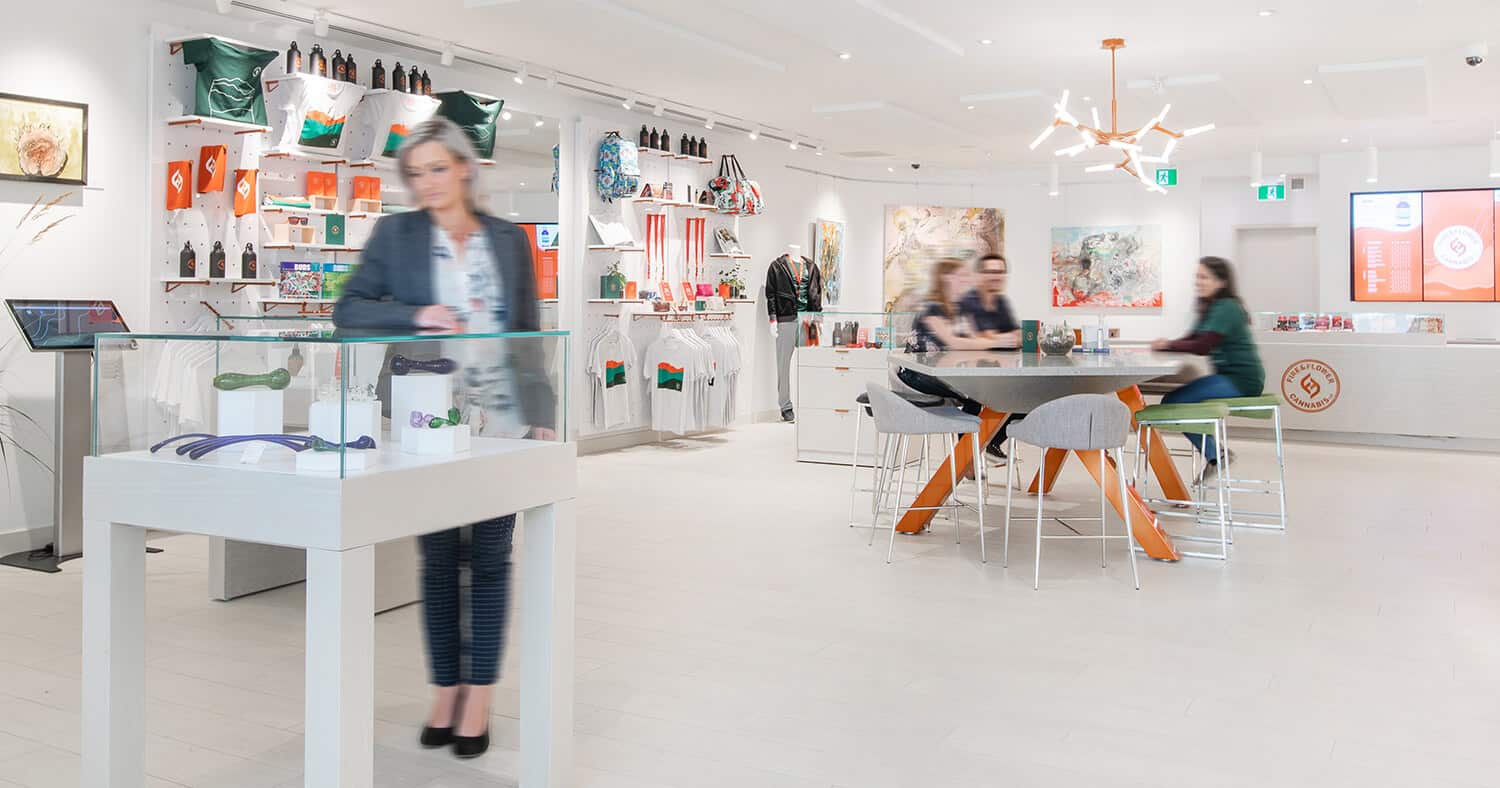Fire & Flower’s Q2 was underwhelming, says ATB Capital

New quarterly results were underwhelming from Canadian cannabis retailer Fire & Flower (Fire & Flower Stock Quote, Charts, News, Analysts, Financials TSX:FAF), according to ATB Capital Markets analyst Frederico Gomes, who reviewed the numbers in a Tuesday report to clients. Gomes said competition in the retail space and a sharp drop in digital sales were factors.
Toronto-based Fire & Flower has over 90 stores across its network along with a cannabis retail tech business in Hifyre. The company also has a strategic investment from convenience store giant Alimentation Couche-Tard.
Fire & Flower released its second quarter fiscal 2022 results on Tuesday for the period ended July 31, 2022, featuring revenue down six per cent year-over-year to $40.7 million and an adjusted EBITDA loss of $6.0 million compared to a gain of $3.1 million a year earlier. FAF said the drop in revenue came mainly from tougher competition in the retail pot space which has pushed prices down.
By business segment, FAF generated $30.4 million in Retail revenue compared to $31.8 million a year earlier, $8.5 million in Wholesale compared to $7.8 million a year ago and $1.9 million from its Digital Platform compared to $3.7 million a year ago. Sequentially, retail revenue was up 2.7 per cent.
On its Hifyre platform, management said the year-over-year revenue and earnings decrease came as a result of a delay in renewals of data subscription agreements and reduced analytics work.
“Subsequent to quarter end, substantial renewal of data subscription agreements are anticipated to be completed through more favourable economics for data subscription customers, stabilizing monthly recurring revenues in future quarters,” the company said in a press release.
The company said its recently launched Spark Perks member pricing program helped increase traffic at its stores, which saw an 18 per cent lift in annualized sales per store compared with the fiscal first quarter 2022. Overall, FAF dropped its store count by nine during the Q2 to count 92 stores.
“Fire & Flower remains focused on the transformation of our business and strategic opportunities with a goal to deliver positive Adjusted EBITDA and Free Cash Flow,” said Stéphane Trudel, CEO, in a press release.
“We are focusing on near-term initiatives such as the Spark Perks Member Pricing program and opportunities to generate additional consolidated gross profit dollars as competitive pressures, and license expansion outpacing market growth create challenging market conditions across the industry. Our Member Pricing program has generated success by getting customers back in our stores and we will look to maximize the margin opportunities from all programs focused on driving gross profit dollars,” he said.
Looking at the Q2 numbers, Gomes said the $40.7 million topline was under the ATB forecast of $43.2 million as well as the consensus call for $42.6 million. Adjusted gross profit of $9.7 million was also under Gomes’ estimate at $11.2 million and the Street’s $11.6 million, while the adjusted EBITDA loss of $6 million was greater than Gomes’ call at negative $3.8 million and the consensus at negative $3.4 million. FAF also missed the consensus on its Q1 top and bottom lines.
“According to FAF, the adj. gross margin continued to be negatively impacted by increased competition, alongside the implementation of a membership pricing strategy and investments into the Firebird Delivery and Hifyre digital platforms. The adj. gross margin for the retail segment was 23.1 per cent, as retail gross margin remains higher than discount competitor retail margins of 16-18 per cent,” Gomes wrote.
“We note the underwhelming results in the digital segment were a result of delays in renewals of subscription agreements, while adj. gross profit and EBITDA margin were further pressured due to the implementation of the member pricing strategy alongside ongoing investments in its digital platform segment,” he said.
Gomes said FAF ended the quarter with about $18.6 million in unrestricted cash and marketable securities and he estimated the company’s free cash flow over the Q2 at about negative $9.8 million.
Fire & Flower’s shares have fallen a long way over the past year-and-a-half, going from a high of $14.50 as of February 2021 to now around the $2.30 range over the past few months.
With his update, Gomes maintained an “Outperform” rating on the stock and $7.00 target price, which at the time of publication translated to a 12-month return of 188 per cent.
On FAF’s prospects, Gomes wrote in a June 14 report that the congested cannabis retail environment in Canada is likely to continue to impact the company throughout the 2022 fiscal year, leading to margin compression, especially considering FAF’s new pricing program.
Gomes said the competitive pressures are likely to start easing over the second half of the year as smaller stores close due to difficulty in accessing capital. That should lead to a gradual increase in sales and margins for FAF.




